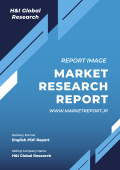1 Preface
2 Scope and Methodology
2.1 Objectives of the Study
2.2 Stakeholders
2.3 Data Sources
2.3.1 Primary Sources
2.3.2 Secondary Sources
2.4 Market Estimation
2.4.1 Bottom-Up Approach
2.4.2 Top-Down Approach
2.5 Forecasting Methodology
3 Executive Summary
4 Europe Biosimilars Market – Introduction
4.1 Overview
4.2 WHO and EMA Terminology on Biosimilars
4.3 Biosimilars and Generics
4.4 Biosimilars and Branded Biological Products
5 Europe Biosimilars Market
5.1 Market Overview
5.2 Historical and Current Market Trends
5.3 Impact of COVID-19
5.4 Market Breakup by Country
5.5 Market Breakup by Molecule
5.6 Market Breakup by Indication
5.7 Market Breakup by Manufacturing Type
5.8 Patent Landscape
5.9 Market Forecast
6 Market Breakup by Country
6.1 Italy
6.1.1 Market Performance
6.1.2 Key Players and Biosimilars
6.1.3 Market Forecast
6.2 Germany
6.2.1 Market Performance
6.2.2 Key Players and Biosimilars
6.2.3 Market Forecast
6.3 France
6.3.1 Market Performance
6.3.2 Key Players and Biosimilars
6.3.3 Market Forecast
6.4 United Kingdom
6.4.1 Market Performance
6.4.2 Key Players and Biosimilars
6.4.3 Market Forecast
6.5 Spain
6.5.1 Market Performance
6.5.2 Key Players and Biosimilars
6.5.3 Market Forecast
6.6 Rest of Europe
6.6.1 Market Performance
6.6.2 Market Forecast
7 Market Breakup by Molecule
7.1 Infliximab
7.2 Insulin Glargine
7.3 Epoetin Alfa
7.4 Etanercept
7.5 Filgrastim
7.6 Somatropin
7.7 Rituximab
7.8 Follitropin Alfa
7.9 Adalimumab
8 Market Breakup by Manufacturing Type
8.1 In-house Manufacturing
8.1.1 Market Trends
8.1.2 Market Forecast
8.2 Contract Manufacturing
8.2.1 Market Trends
8.2.2 Market Forecast
9 Market Breakup by Indication
9.1 Auto-Immune Diseases
9.2 Blood Disorder
9.3 Diabetes
9.4 Oncology
9.5 Growth Deficiency
9.6 Female Infertility
10 European Biosimilar Market: SWOT Analysis
10.1 Overview
10.2 Strengths
10.3 Weaknesses
10.4 Opportunities
10.5 Threats
11 European Biosimilar Market: Value Chain Analysis
11.1 Characterizing the Existing Innovator Drug
11.2 Research and Development
11.2.1 Characterization of Biosimilars
11.2.2 Developing a Unique Cell Line
11.3 Product Development
11.3.1 Pre-Testing
11.3.2 Intermediary Clinical Testing (PK/PD)
11.3.3 Confirmatory Clinical Phase-III
11.4 Final Product Formulation
11.5 Marketing and Distribution
12 Porter’s Five Forces Analysis
12.1 Overview
12.2 Bargaining Power of Buyers
12.3 Bargaining Power of Suppliers
12.4 Degree of Competition
12.5 Threat of New Entrants
12.6 Threat of Substitutes
13 Price Analysis
13.1 Key Price Indicators
13.2 Price Trends
14 Requirements for Setting Up a Generic Drug Manufacturing Plant
14.1 Manufacturing Process
14.2 Raw Material Requirements
14.3 Raw Material Pictures
14.4 Land and Construction Requirements
14.5 Machinery and Infrastructure Requirements
14.6 Machinery Pictures
14.7 Plant Layout
14.8 Packaging Requirements
14.9 Utility Requirements
14.10 Manpower Requirements
15 Competitive Landscape
15.1 Market Structure
15.2 Key Players
15.3 Profiles of Key Players
15.3.1 Novartis
15.3.2 Pfizer
15.3.3 Teva
15.3.4 Celltrion
15.3.5 Merck Sharp & Dohme
15.3.6 Samsung Bioepis
15.3.7 Eli Lilly
15.3.8 Accord Healthcare Ltd.
15.3.9 Amgen
15.3.10 Boehringer Ingelheim
15.3.11 Hexal Ag
15.3.12 Apotex
15.3.13 Stada Arzneimittel Ag
15.3.14 Ratiopharm
15.3.15 Mylan
*** 免責事項 ***
https://www.globalresearch.co.jp/disclaimer/











